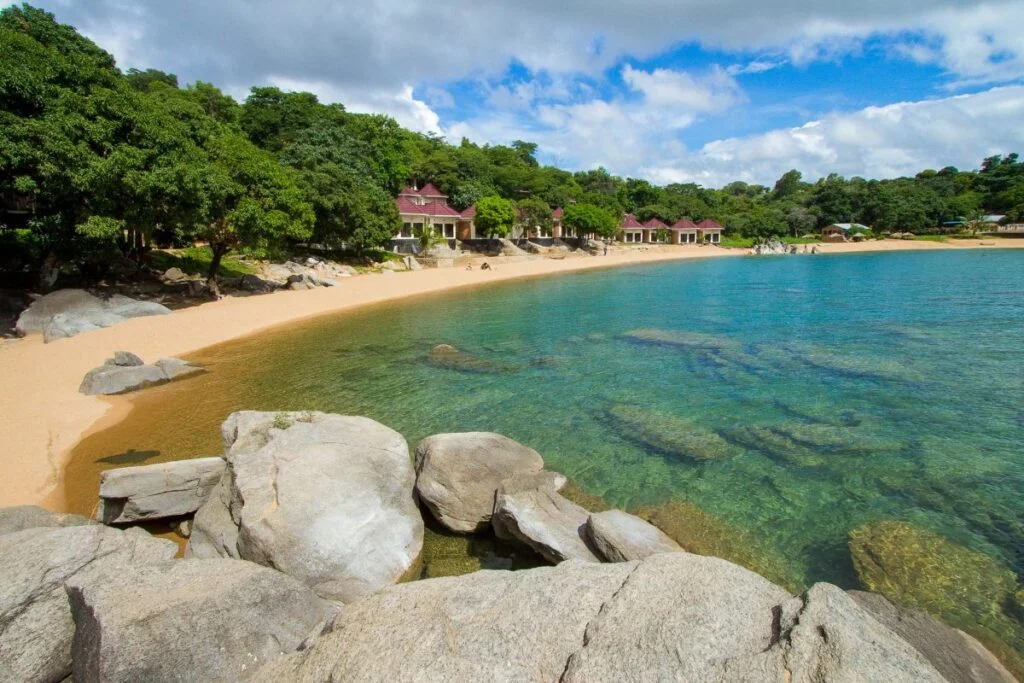 |
Lake Malawi National Park is located at the southern tip of Lake Malawi. It possesses a unique collection of fish species endemic to the lake. The lake attracts researchers from all over the world eager to learn more about the unique diversity found in the park.
The lake and its surrounding geography
9,400 hectares of Lake Malawi National Park is located in the southern part of the huge Lake Malawi region. The park has an area around Cape Maclear, Monkey Bay, Lake Malawi and the islands, which are located about 100 meters from the coast. to the Malawi Tourism Department. Scenery around Lake Malawi National Park consists of forested rocky mountains sloping down to the lake, sandy coves and beaches. The park is also surrounded by heritage monuments such as cliffs of ethnic scars on their faces and the graves of early missionaries who settled there in the 1870s.
 |
| Lake Malawi National Park |
Natural history
In 1980, Lake Malawi National Park was designated a national park. Prior to that, according to a study by the organization Conservation and Sustainable Development, since 1935 the mainland part of the park was managed as a forest reserve. Due to the fact that in 1984 there were no fish species in the lake that were not found anywhere else in the world, Lake Malawi National Park was declared a UNESCO World Heritage Site. Since the 1840s, Salim bin Abdullah, a Swahili Arab slave owner, established his headquarters for the slave trade on the shores of Lake Malawi. According to UNESCO, the southern shores of Lake Malawi also served as routes for the slave trade to Tete Province and the Zambezi Valley in Mozambique.
 |
| Lake Malawi National Park |
Research, education and tourism
Because of the Lake Malawi National Park's unique biodiversity attracts research scientists andstudents eager to learn about the unique fish species in the lake. Accordingto a study by the World Bank, there are between 500 and 1000 species of fish in the lake.Malawi has 11 fish families. These include the endemic fresh cichlids, afamily of aquatic fish that make up over 90 percent of the fish species in the lake. LakeMalawi National Park is also a popular tourist destination. aquaticrecreational activities in the waters of the lake such as scuba diving, snorkeling,yachting, sailing, swimming and kayaking are available. In the parkhikers can hike, watch birds, go mountain biking and walk the trailsaround the lake. There are also sports such as golf and volleyball available totourists.
 |
| Lake Malawi National Park |
Habitats and biodiversity
Lake Malawi National Park has a variety of habitats. These include rocky coastlines, sandy beaches, wooded hillsides, swamps, and lagoons. According to UNESCO, there are also granite hills that rise sharply from the lake shore and several sandy bays. Lake Malawi also has 30 percent of all known cichlid fish species in the world. The underwater habitats, which are sandy, weak, rocky, and contain reeds and algae, support a variety of fish species in the lake. The park is also rich in fauna. Birds such as the palm-collared thrush, marabou stork, shearing of palm trees, ridge and reptiles such as the monitor lizard are found there. Lake Malawi National Park also has three species of antelope: kudu, sunya and nyala, baboon and hirax.
 |
| Lake Malawi National Park |
Environmental threats and conservation efforts
Under Malawi law, Lake Malawi National Park is a protected area with a management plan for its resources. But potential future human threats are mentioned, such as overfishing, collecting firewood in the park, contamination of the lake by boats, and siltation from deforested forests. Conservation experts also pointed out that agricultural-related activities such as the use of pesticides and fertilizers on adjacent agricultural land could affect the biological diversity of the lake. These contribute to the growth of blue-green algae, harmful to the fragile aquatic life of Lake Malawi. Although the overland and underwater habitats of Lake Malawi National Park are in good condition, according to UNESCO, there should be a plan.
 |
| Lake Malawi National Park |
